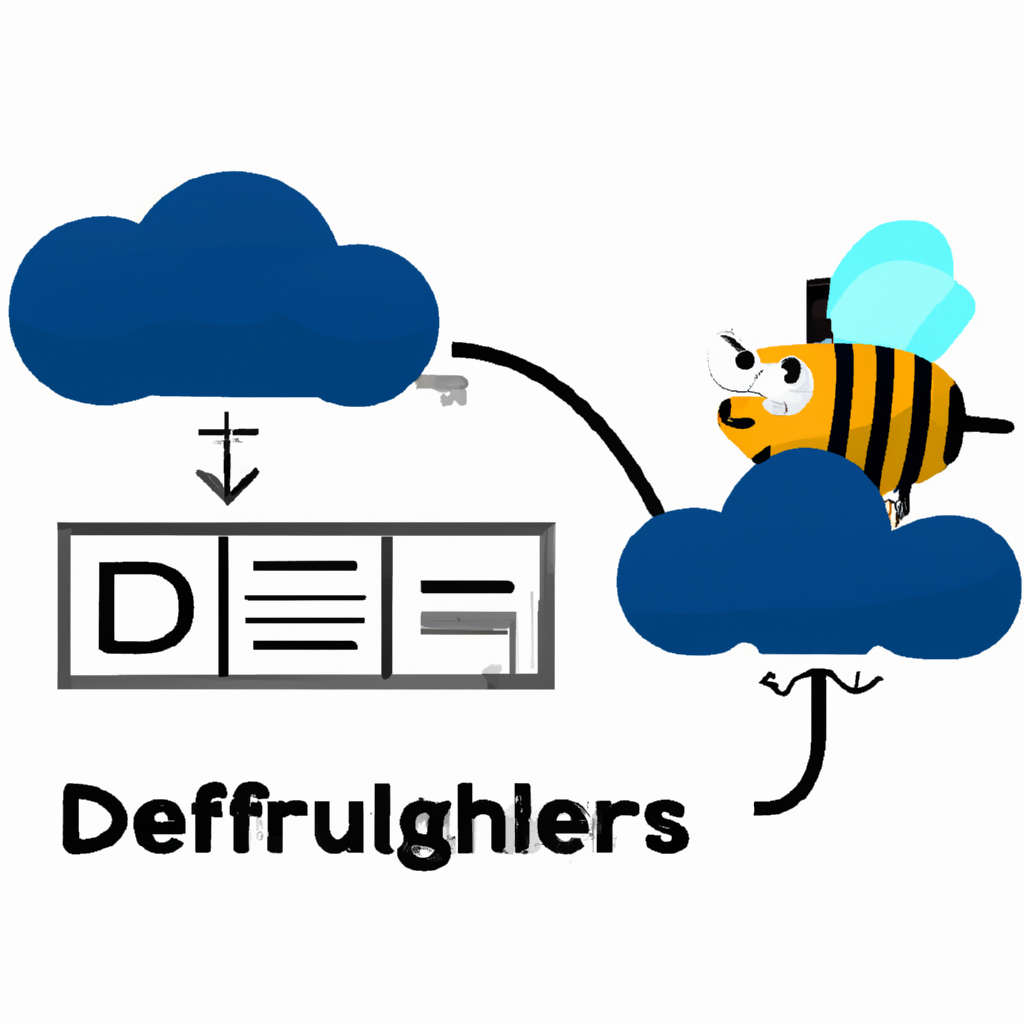Introduction
Debugging serverless functions presents unique challenges due to their ephemeral nature and the distributed environments in which they operate. Unlike traditional applications, serverless functions are stateless, event-driven, and often short-lived, making it difficult to trace and diagnose issues. This introduction explores the intricacies of debugging in the ephemeral cloud, highlighting the tools, techniques, and best practices essential for identifying and resolving problems in serverless architectures. By understanding the nuances of serverless debugging, developers can enhance the reliability and performance of their cloud-based applications, ensuring seamless operation in dynamic and scalable environments.
Best Practices For Debugging Serverless Functions In The Ephemeral Cloud
Debugging serverless functions in the ephemeral cloud presents unique challenges and opportunities. As serverless architectures gain popularity due to their scalability and cost-efficiency, developers must adapt their debugging practices to suit the transient nature of these environments. Traditional debugging methods often fall short in this context, necessitating a shift towards more dynamic and proactive strategies.
One of the primary challenges in debugging serverless functions is the lack of a persistent runtime environment. Unlike traditional servers, which maintain state and logs over extended periods, serverless functions are ephemeral, meaning they exist only for the duration of their execution. This transient nature makes it difficult to capture and analyze runtime data. To address this, developers should implement comprehensive logging and monitoring from the outset. By integrating logging frameworks and monitoring tools, such as AWS CloudWatch or Azure Monitor, developers can capture detailed execution traces and performance metrics. These tools provide invaluable insights into function behavior, enabling developers to identify and resolve issues more efficiently.
In addition to logging and monitoring, employing structured logging practices can significantly enhance the debugging process. Structured logging involves recording log entries in a consistent, machine-readable format, such as JSON. This approach facilitates automated log analysis and correlation, allowing developers to quickly pinpoint anomalies and trace the flow of execution across distributed components. Furthermore, structured logs can be ingested by centralized logging systems, enabling cross-functional teams to collaborate more effectively in diagnosing and resolving issues.
Another best practice for debugging serverless functions is the use of distributed tracing. Distributed tracing provides a holistic view of a request as it traverses through various microservices and serverless functions. By instrumenting functions with tracing libraries, such as OpenTelemetry or AWS X-Ray, developers can visualize the entire request lifecycle, identify latency bottlenecks, and detect failures in interconnected services. This end-to-end visibility is crucial for diagnosing complex issues that span multiple components in a serverless architecture.
Moreover, leveraging feature flags and canary deployments can mitigate the impact of potential bugs in serverless functions. Feature flags allow developers to enable or disable specific functionality at runtime without deploying new code. This capability is particularly useful for isolating and testing changes in a controlled manner. Similarly, canary deployments involve gradually rolling out updates to a small subset of users before a full-scale release. By monitoring the performance and behavior of the canary deployment, developers can detect and address issues before they affect the entire user base.
Furthermore, adopting a test-driven development (TDD) approach can significantly reduce the likelihood of introducing bugs in serverless functions. TDD emphasizes writing tests before implementing the actual code, ensuring that each function is thoroughly validated against predefined criteria. This practice not only improves code quality but also provides a safety net for future changes, as existing tests can quickly identify regressions.
Finally, embracing a culture of continuous integration and continuous deployment (CI/CD) is essential for maintaining the reliability of serverless functions. CI/CD pipelines automate the process of building, testing, and deploying code, enabling developers to deliver updates more frequently and with greater confidence. By incorporating automated tests and static code analysis into the CI/CD pipeline, teams can catch issues early in the development cycle, reducing the risk of deploying faulty code to production.
In conclusion, debugging serverless functions in the ephemeral cloud requires a combination of proactive monitoring, structured logging, distributed tracing, and robust testing practices. By adopting these best practices, developers can effectively navigate the challenges of ephemeral environments, ensuring the reliability and performance of their serverless applications. As serverless architectures continue to evolve, staying abreast of emerging tools and techniques will be crucial for maintaining a competitive edge in the ever-changing landscape of cloud computing.
Tools And Techniques For Effective Debugging In Serverless Environments

Debugging serverless functions presents unique challenges due to their ephemeral nature and the distributed architecture of serverless environments. Unlike traditional server setups, where developers have direct access to the underlying infrastructure, serverless functions operate in a stateless, event-driven manner, often running for mere seconds before terminating. This transient behavior complicates the debugging process, necessitating specialized tools and techniques to effectively identify and resolve issues.
One of the primary tools for debugging serverless functions is logging. Comprehensive logging is indispensable in serverless environments, as it provides a historical record of function execution. By strategically placing log statements throughout the code, developers can trace the flow of execution and capture critical information about the function’s state at various points. Cloud providers like AWS Lambda, Google Cloud Functions, and Azure Functions offer integrated logging services such as Amazon CloudWatch, Google Cloud Logging, and Azure Monitor, respectively. These services aggregate logs from multiple sources, enabling developers to search, filter, and analyze logs to pinpoint issues.
In addition to logging, distributed tracing is another vital technique for debugging serverless functions. Distributed tracing involves tracking requests as they propagate through various services and functions within a serverless architecture. This technique provides a holistic view of the system, highlighting the interactions between different components and identifying performance bottlenecks or failures. Tools like AWS X-Ray, Google Cloud Trace, and Azure Application Insights facilitate distributed tracing by automatically capturing trace data and visualizing the request flow. By examining these traces, developers can gain insights into the latency and dependencies of their serverless functions, making it easier to diagnose and resolve issues.
Moreover, monitoring and alerting play a crucial role in maintaining the health of serverless applications. Continuous monitoring allows developers to observe the performance and behavior of their functions in real-time. Metrics such as invocation count, execution duration, error rates, and resource utilization provide valuable information about the function’s performance. Cloud providers offer built-in monitoring solutions like AWS CloudWatch Metrics, Google Cloud Monitoring, and Azure Monitor Metrics, which enable developers to set up custom dashboards and alerts. By configuring alerts for specific thresholds or anomalies, developers can proactively address issues before they escalate, ensuring the reliability and stability of their serverless applications.
Furthermore, local debugging and testing frameworks are essential for developing and debugging serverless functions. While cloud-based debugging tools are invaluable, they often require deploying the function to the cloud, which can be time-consuming and less efficient during the development phase. Local debugging tools like AWS SAM CLI, Google Cloud Functions Emulator, and Azure Functions Core Tools allow developers to simulate the cloud environment on their local machines. These tools enable developers to test and debug their functions locally, providing a faster feedback loop and reducing the reliance on cloud deployments for every code change.
Additionally, leveraging third-party debugging and monitoring tools can enhance the debugging process in serverless environments. Tools like Sentry, Datadog, and New Relic offer advanced error tracking, performance monitoring, and analytics capabilities. These tools integrate seamlessly with serverless platforms, providing comprehensive visibility into the application’s behavior and facilitating efficient debugging. By utilizing these third-party solutions, developers can gain deeper insights into their serverless functions, streamline the debugging process, and improve overall application performance.
In conclusion, debugging serverless functions requires a combination of specialized tools and techniques to navigate the challenges posed by their ephemeral nature. Logging, distributed tracing, monitoring, local debugging frameworks, and third-party tools collectively contribute to effective debugging in serverless environments. By adopting these practices, developers can enhance their ability to identify and resolve issues, ensuring the reliability and performance of their serverless applications in the dynamic landscape of the ephemeral cloud.
Common Challenges And Solutions In Debugging Serverless Functions
Debugging serverless functions presents unique challenges due to the ephemeral nature of the cloud environment in which they operate. Unlike traditional server-based applications, serverless functions are stateless and short-lived, making it difficult to capture and analyze runtime information. One common challenge is the lack of persistent logging. Since serverless functions are designed to scale automatically and run in isolated environments, traditional logging mechanisms may not be sufficient. To address this, developers can leverage cloud-native logging services such as AWS CloudWatch, Azure Monitor, or Google Cloud Logging. These services aggregate logs from multiple instances, providing a centralized view of the function’s behavior over time.
Another significant challenge is the difficulty in replicating the production environment for debugging purposes. Serverless functions often rely on various cloud services and configurations that are hard to mimic locally. To mitigate this, developers can use tools like AWS SAM, Azure Functions Core Tools, or Google Cloud Functions Emulator. These tools allow for local testing and debugging by simulating the cloud environment, enabling developers to identify issues before deploying to production.
Performance bottlenecks are also a common issue in serverless functions. Due to the pay-per-use model, inefficient code can lead to increased costs and degraded performance. Profiling tools such as AWS X-Ray, Azure Application Insights, and Google Cloud Trace can help identify performance issues by providing detailed insights into function execution times and resource utilization. By analyzing these metrics, developers can pinpoint bottlenecks and optimize their code accordingly.
Cold starts are another challenge that can impact the performance of serverless functions. A cold start occurs when a function is invoked after being idle for a period, resulting in a delay as the cloud provider provisions the necessary resources. To minimize the impact of cold starts, developers can use techniques such as keeping functions warm by periodically invoking them or optimizing the function’s initialization code. Additionally, some cloud providers offer provisioned concurrency, which keeps a specified number of function instances warm and ready to handle requests, thereby reducing latency.
Error handling in serverless functions can also be complex due to the distributed nature of the cloud environment. Functions may fail due to various reasons such as network issues, service outages, or code errors. Implementing robust error handling mechanisms is crucial to ensure reliability. Developers can use retry strategies, circuit breakers, and fallback mechanisms to handle transient errors gracefully. Additionally, integrating with monitoring and alerting services can help detect and respond to issues promptly.
Security is another critical aspect that cannot be overlooked. Serverless functions often interact with various cloud services and APIs, making them susceptible to security vulnerabilities. Implementing the principle of least privilege by granting minimal permissions required for the function to operate can reduce the attack surface. Additionally, using environment variables to manage sensitive information and employing encryption for data at rest and in transit can enhance security.
In conclusion, debugging serverless functions in the ephemeral cloud environment requires a different approach compared to traditional server-based applications. By leveraging cloud-native tools and services, developers can overcome challenges related to logging, environment replication, performance bottlenecks, cold starts, error handling, and security. Adopting these best practices can lead to more efficient and reliable serverless applications, ultimately enhancing the overall user experience.
Q&A
1. **What is a common challenge when debugging serverless functions?**
– A common challenge is the lack of persistent state and the ephemeral nature of serverless environments, which makes it difficult to reproduce and trace issues.
2. **What tools can be used to debug serverless functions?**
– Tools like AWS CloudWatch, Azure Application Insights, and Google Cloud Logging can be used to collect logs and monitor serverless functions for debugging purposes.
3. **How can you simulate a serverless environment locally for debugging?**
– You can use frameworks like AWS SAM (Serverless Application Model), Serverless Framework, or LocalStack to simulate a serverless environment on your local machine for testing and debugging.Debugging serverless functions in the ephemeral cloud presents unique challenges due to the stateless and transient nature of these environments. Traditional debugging techniques often fall short, necessitating new strategies such as extensive logging, use of monitoring tools, and local emulation. Effective debugging in this context requires a combination of proactive design considerations, such as implementing robust error handling and leveraging cloud provider tools, to ensure visibility and traceability of function execution. By adopting these practices, developers can mitigate the complexities of debugging in ephemeral cloud environments and maintain the reliability and performance of their serverless applications.



